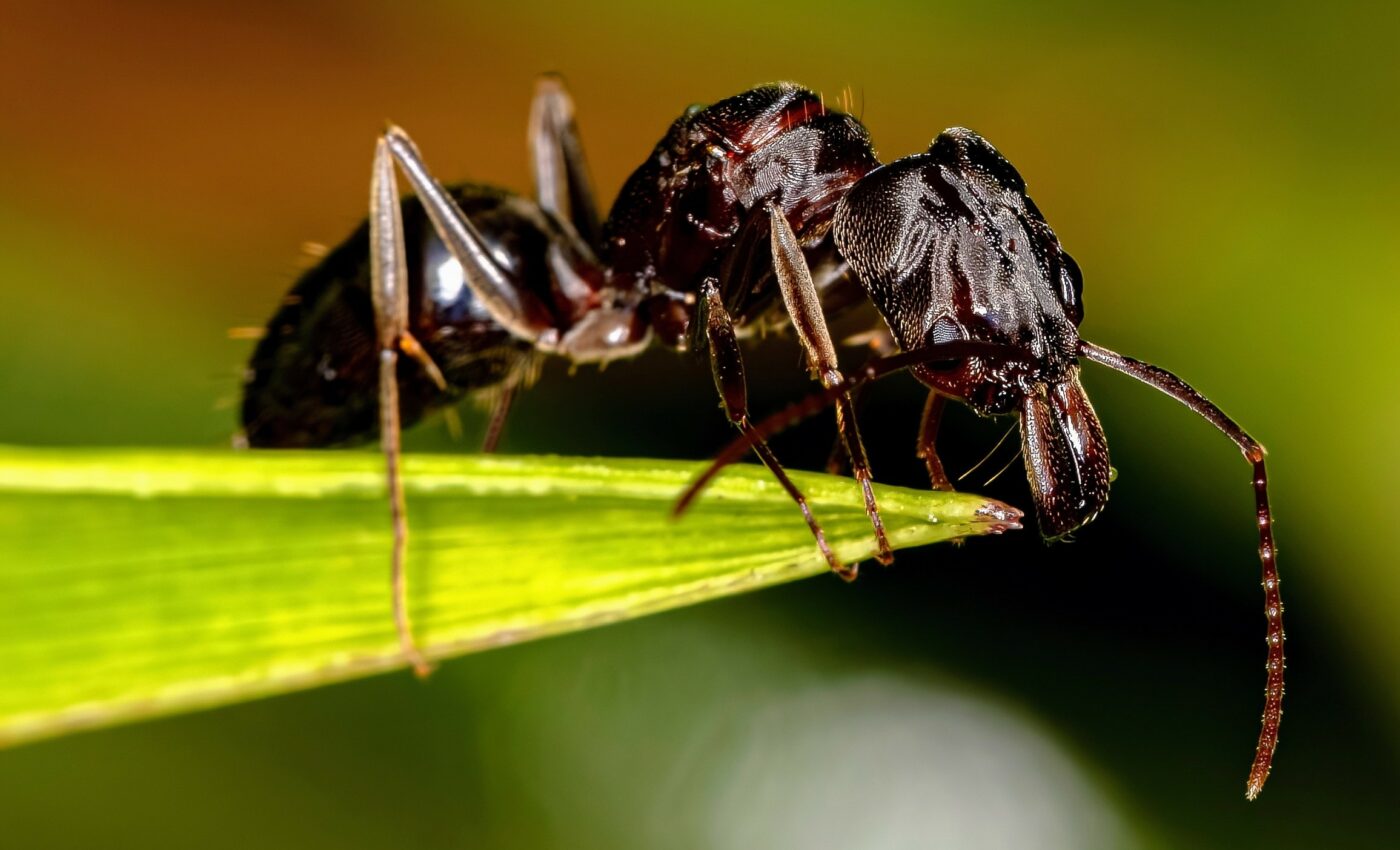
How do trap-jaw ants keep from blowing their heads off?
Trap-jaw ants (Odontomachus brunneus) are predatory insects with exceptional jaws. They open their jaws by 180o and lock them there until they need to snap them shut. A snap, when it happens, takes mere microseconds and involves considerable force. In fact, this ant’s jaws are among the fastest moving appendages in the animal kingdom.
The ants use these jaws to stun or kill prey mostly, but can also release the snap close to the ground surface. This action ends up propelling the ant into the air, either as a sort of “leap” to aid locomotion, or to get the ant out of a sticky situation.
When not used for killing prey or leaping to safety, the ant’s jaws can be used extremely delicately to greet other ants or to manipulate small pieces of food. Impressed by the way in which trap-jaw ants use their jaws for both delicate maneuvers and savage blows, a team led by Sheila Patek at Duke University set out to investigate just how these jaws work. The fascinating results of the study are published in the Journal of Experimental Biology.
The species is native to the southern parts of the U.S., Central America and the West Indies. Patek and her colleagues collected specimens from a colony they found in the scrubland near Lake Placid, Florida. They dissected some of the ants and took detailed measurements and micro-CT scans of the heads and jaws. The experts used these measurements to model the ant’s movements and understand what enables them to release their jaws with such force and speed.
Study co-author Chi-Yun Kuo gently secured ants in front of a high-speed camera and filmed their jaw movements at 300,000 frames per second to capture the lightning-fast maneuver as the insects crashed their mandibles together.
After release, each mandible swung in a perfect arc through the first 65o before it decelerated and came to rest. “When we played back the videos in slow-motion, their strikes were spectacularly precise,” said Patek.
The researchers found that the ants used two separate spring mechanisms to accomplish their powerful jaw snaps. Firstly, muscles stretch the jaws apart so that there is a 180o angle between them. In doing this, they deform the sides of the ant’s head somewhat, making it slightly shorter (3.2 percent) and narrower (6 percent) in the middle. As the exoskeleton deforms inwards, it stores elastic potential energy that can be used when the jaws are released.
Secondly, enormous muscles attach to each jaw by means of springy elastic tendons. Thus torque is developed by having stored elastic energy in two different sites on each mandible. When the jaws are released, the head capsule pops back into normal shape and this pushes part of the mandible forwards, away from the body. At the same time, the elastic tendons pulls the internal edge of each jaw towards the body. This causes the jaws to swing out in a perfect arc, and to achieve a maximum speed of around 120 mph (195 km/h). The movement is equivalent to spinning at an eye-watering 470,000 rpm. The researchers term this system a “dual spring force couple,” because two springs deliver energy at two different locations at the same time, on each mandible.
Calculating the amount of energy released as the insects unleashed their smashing mandibles, the team discovered that the energy stored as the head exoskeleton deformed was sufficient to drive the mandibles through 33o of perfect rotation. The energy stored in the springy tendon attaching the mandible to the enormous adductor muscle inside the head (comprising 14 percent of the ant’s body mass) powered the remaining 32o of the arc.
The researchers puzzled over how this spring system could work without generating excessive friction, which would slow the jaw movements and result in wear-and-tear on the joints. Using dynamic modeling, they found that dual spring force couples reduce the need for joint constraints and that the ants had a far less rigid joint structure than they expected. This system reduces friction, which is essential if the ant is to snap its jaws shut repeatedly.
Trap-jaw ants thus make use of a mechanism that allows them to coordinate the opposing forces driving the perfect mandible rotation. Since no strain is placed on the fragile joint about which the mandible pivots, there is no damage to the ant itself, regardless of how often it snaps its jaws closed.
Patek suspects that other spring-loaded creatures also use the strategy, and she, Sarah Bergbreiter (Carnegie Mellon University, USA) and Suzanne Cox (Duke University) suggest that the revolutionary design could be embraced by engineers.
“The principles can be incorporated into microrobotics to improve multifunctionality, precision and longevity of ultrafast systems,” they say.
More details of the study can be found at: https://journals.biologists.com/jeb/article-lookup/doi/10.1242/jeb.244077
—
By Alison Bosman, Earth.com Staff Writer













